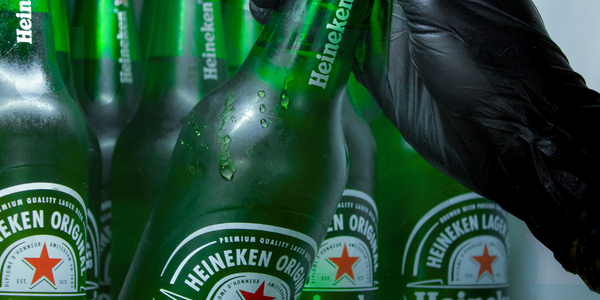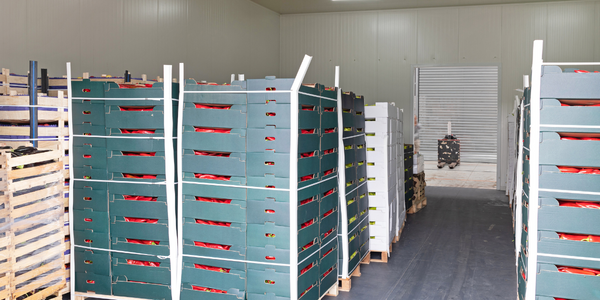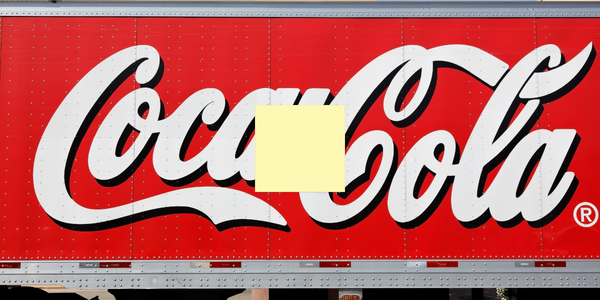Download PDF
Papa Gino's Pizzeria
Technology Category
- Platform as a Service (PaaS) - Connectivity Platforms
Applicable Industries
- Food & Beverage
Applicable Functions
- Logistics & Transportation
- Sales & Marketing
Use Cases
- Fleet Management
- Supply Chain Visibility
Services
- System Integration
The Challenge
Papa Gino's Pizzeria was facing several challenges with its delivery system. The customer experience was compromised due to lack of visibility and consistency around delivery times. The company was struggling with forecasting driver requirements accurately and managing driver retention. They were eager to prioritize self-delivery to maintain a relationship with their customers. However, manual intervention when dispatching to various delivery partners was slow and laborious. They were unable to achieve the desired unit economies for profitable delivery. They had limited metrics to optimize fleet performance. A significant increase in delivery volume was having a detrimental effect on delivery success rates. Too many real-time decisions had to be made by the in-house operations team.
About The Customer
Papa Gino's Pizzeria is a well-established restaurant chain in New England, United States. The company was founded in 1961 and has a rich heritage of serving high-quality, handmade pizzas with fresh ingredients and an 80-year old Italian family recipe. From a single restaurant in East Boston, Papa Gino's has expanded over the years and now has nearly 100 restaurants in Massachusetts, Rhode Island, New Hampshire, and Connecticut. The company has more than doubled in size in the past year, and restaurant delivery has become an essential part of its off-premise food delivery strategy.
The Solution
Papa Gino's Pizzeria implemented VROMO, a solution that enables restaurant brands to work with multiple order sources while operating an optimized blend of self-delivery and 3rd party delivery providers to maximize customer reach and profitability. The solution provided automated dispatch with rules in place to ensure the in-house delivery team receives orders ahead of 3rd party delivery service. It also offered a dispatch solution capable of stacking multiple orders into a single delivery run. The solution provided data to analyze performance for both self and 3rd party delivery from all order sources, across all restaurant sites. It also offered branded order tracking and B2C messaging to improve customer experience.
Operational Impact
Quantitative Benefit
Related Case Studies.

Case Study
The Kellogg Company
Kellogg keeps a close eye on its trade spend, analyzing large volumes of data and running complex simulations to predict which promotional activities will be the most effective. Kellogg needed to decrease the trade spend but its traditional relational database on premises could not keep up with the pace of demand.

Case Study
HEINEKEN Uses the Cloud to Reach 10.5 Million Consumers
For 2012 campaign, the Bond promotion, it planned to launch the campaign at the same time everywhere on the planet. That created unprecedented challenges for HEINEKEN—nowhere more so than in its technology operation. The primary digital content for the campaign was a 100-megabyte movie that had to play flawlessly for millions of viewers worldwide. After all, Bond never fails. No one was going to tolerate a technology failure that might bruise his brand.Previously, HEINEKEN had supported digital media at its outsourced datacenter. But that datacenter lacked the computing resources HEINEKEN needed, and building them—especially to support peak traffic that would total millions of simultaneous hits—would have been both time-consuming and expensive. Nor would it have provided the geographic reach that HEINEKEN needed to minimize latency worldwide.

Case Study
Energy Management System at Sugar Industry
The company wanted to use the information from the system to claim under the renewable energy certificate scheme. The benefit to the company under the renewable energy certificates is Rs 75 million a year. To enable the above, an end-to-end solution for load monitoring, consumption monitoring, online data monitoring, automatic meter data acquisition which can be exported to SAP and other applications is required.

Case Study
Coca Cola Swaziland Conco Case Study
Coco Cola Swaziland, South Africa would like to find a solution that would enable the following results: - Reduce energy consumption by 20% in one year. - Formulate a series of strategic initiatives that would enlist the commitment of corporate management and create employee awareness while helping meet departmental targets and investing in tools that assist with energy management. - Formulate a series of tactical initiatives that would optimize energy usage on the shop floor. These would include charging forklifts and running cold rooms only during off-peak periods, running the dust extractors only during working hours and basing lights and air-conditioning on someone’s presence. - Increase visibility into the factory and other processes. - Enable limited, non-intrusive control functions for certain processes.

Case Study
Temperature Monitoring for Restaurant Food Storage
When it came to implementing a solution, Mr. Nesbitt had an idea of what functionality that he wanted. Although not mandated by Health Canada, Mr. Nesbitt wanted to ensure quality control issues met the highest possible standards as part of his commitment to top-of-class food services. This wish list included an easy-to use temperature-monitoring system that could provide a visible display of the temperatures of all of his refrigerators and freezers, including historical information so that he could review the performance of his equipment. It also had to provide alert notification (but email alerts and SMS text message alerts) to alert key staff in the event that a cooling system was exceeding pre-set warning limits.

Case Study
Coca-Cola Refreshments, U.S.
Coca-Cola Refreshments owns and manages Coca-Cola branded refrigerators in retail establishments. Legacy systems were used to locate equipment information by logging onto multiple servers which took up to 8 hours to update information on 30-40 units. The company had no overall visibility into equipment status or maintenance history.





